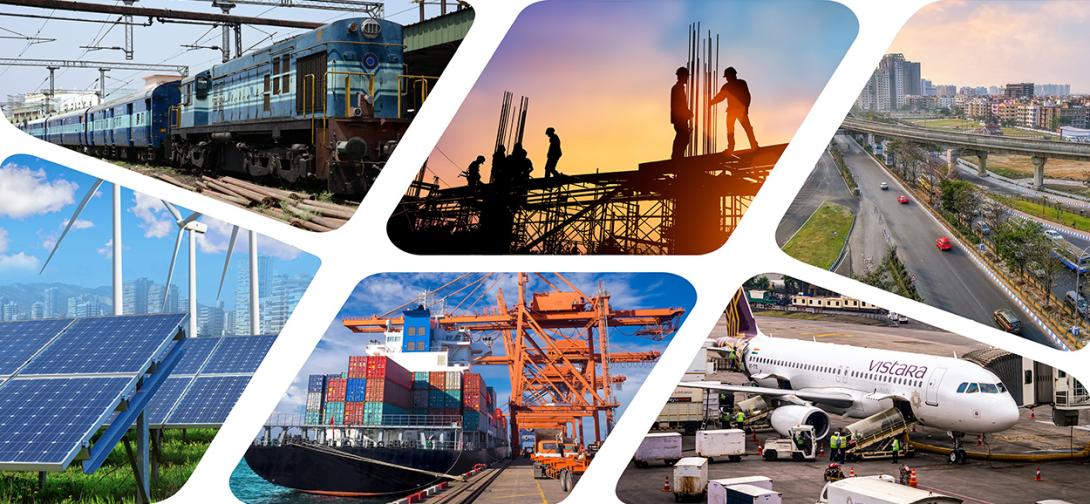Asset Monetisation, holds the key to value creation in Infrastructure
Sustained economic growth is the key to India’s power. Infrastructure without a doubt lies at the heart of this growth story. Infrastructure is inextricably linked to growth by its inherent ability to supports livelihoods, drive businesses, generate employment and in effect determine quality of life. Top quality well managed Infrastructure holds the key to growth and job creation.
With the COVID taking an unprecedented toll on the economic activity in the country, significantly enhanced level of infrastructure investment is required for reviving growth. Covid has also bought to fore, the need for resilient, sustainable and advanced infrastructure systems. Investing huge sums into creating world class infrastructure will lead to a high trajectory of growth, but this essentially hinges on availability of long-term capital at scale. Financing of infrastructure thus requires a diversified set of alternatives, especially so in economies at the cusp of transformation such as India. Meeting the required scale of infrastructure spending can only be made possible through a re- imagined approach.
In this context, Asset Monetisation merits a seat on the table. Asset recycling and monetisation serves two critical objectives, firstly it unlocks value from public investment in Infrastructure and secondly it taps private sector efficiencies in operations and management of infrastructure. Asset Monetization at its core, is a distinct shift from ‘privatization’ and ‘slump sale’ of assets to ‘structured partnerships’ with private sector within defined contractual frameworks. The driver for Asset Monetisation is beyond its fiscal impact. It is not just a funding mechanism, but an overall paradigm shift in infrastructure operations, augmentation and maintenance.
India has made massive strides in creating a mesh of infrastructure through flagship build-out programmes in recent years. For most sectors, this has been driven by the public sector or public funding. Today, India holds one of the largest brownfield stock of fixed assets in the world. However, while public sector can build infrastructure, it is rarely able to run it efficiently. It is a widely accepted fact the private sector has much greater resource efficiencies, when it comes to developing and managing infrastructure. Increasingly, therefore, government looks to partner with the private sector as a partner. However, for effective co-working between the public and private sector, PPP models are now demanding a reboot.
India has a robust PPP ecosystem involving institutional mechanisms, model contractual frameworks, regime of standards and financing institutions. Concepts such as preservation of ownership with government, transfer back of asset at the end of concession and Key Performance Indicators are well engrained in our PPP eco-system. However, over the last few years there has been reduced appetite of private sector and debt financiers for greenfield infrastructure. This necessitates innovative mechanisms, structured around mature brownfield assets, for tapping private investment. Asset Monetisation, therefore strives to tilt the axis from greenfield to brownfield models.
Increased appetite for brownfield assets is evidenced by the flow of private and institutional capital into sectors such as roads, power and telecom. Private sector has very effectively utilized risk managed structures to monetize assets such as toll roads, transmission towers, pipelines and telecom towers thus bringing in a new investor class into India’s Infrastructure. From the public sector, NHAI has monetized close to 1,400 km of toll roads through TOT concessions and has raised Rs. ~17,000 crore. Powergid successfully launched the first ever public sector InvIT monetizing its first batch of transmission assets and raising Rs. ~7,700 crore. Airports Authority of India successfully monetized 6 brownfield AAI airports through OMDA model raising upfront proceedand private investment towards augmentation of the airports. Indian Railways also launched the strategic foray into PPP in station redevelopment and running of passenger trains.
Innovative structured vehicles such as Infrastructure Investment Trusts (InvITs) & Real Estate Investment Trusts (REITs) are a capital market play. They are created and operated under the regulatory framework of SEBI and targets pooled long term capital. Since the launch of regulations for these vehicles by SEBI in year 2014, India’s private sector has very effectively unlocked its invested equity by employing these vehicles and bringing in capital from global pension and sovereign funds. AUM of Rs. ~1 lakh crore from the private sector alone, is held by these vehicles. Through the Asset Monetisation programme, public sector entities will also tap into long term institutional capital and build on the recent success of PowerGrid’s InvIT. More importantly, India’s common public can also invest in InvITs and REITs as retail investors. These models interest a different investor class comprising of global pension and sovereign wealth funds and also retail investors. The SEBI Regulations bring transparency for investors and also efficiency in asset management.
India’s tryst with Monetisation is not a new thing but an ongoing exercise. There is now a need to systematically adopt these initiatives across varied asset classes and streamline the frameworks and modalities of such alternatives in a programmatic manner which can be readily absorbed, evaluated and replicated.
Availability of a sustained and robust asset pipeline has been cited as a key concern by investors at various forums. A well laid out pipeline gives a comprehensive view to investors & developers of brown-field investment avenues in Infrastructure and helps them plan their fund raising and due-diligence activities. An initiative such as National Monetisation Pipeline (NMP) is pathbreaking at many levels. Creating a sectorally diverse pipeline beyond the traditional sectors of roads and power necessitated a ‘whole of Government’ exercise with a comprehensive scanning of brownfield asset inventory. A diverse and sustained National Monetisation Pipeline (NMP) not only provides visibility to the investors on potential financing opportunities but also driving preparedness of public authorities to structure and launch transactions in a systematic and transparent manner.
Lastly, States are an equal partner in India’s Infrastructure story. India cannot grow faster unless states grow at higher rates and hence there is a need to work closely with states. States too present a significant potential for leveraging assets such as tolled State Highways, Transmission towers, discoms, bus terminals, sports stadiums and state warehouses to mobilize capital for Infrastructure investment which can have multiplier effects on the state economies. Recognizing the criticality of enhanced capital expenditure, the “Scheme for Special Assistance to States for Capital Expenditure” to boost capital expenditure by state governments reeling under the financial impact of COVID-19 pandemic, is a pathbreaking measure. Under the Scheme, incentive is provided to the States in the form of 50-year interest free loan. During the current year, Rs. 5,000 crore of incentive payments has been budgeted for states undertaking monetisation and disinvestment.
In order to give the needed fillip to the monetization initiative, following three aspects need concerted efforts and interventions. Firstly, a relentless focus on implementation is the key. Secondly developing brownfield models and frameworks will provide the needed pace. Lastly, driving states and partnering with them in undertaking monetisation in a structured manner.
Author is CEO, NITI Aayog. Views expressed are personal.
 National Portal Of India
National Portal Of India 







